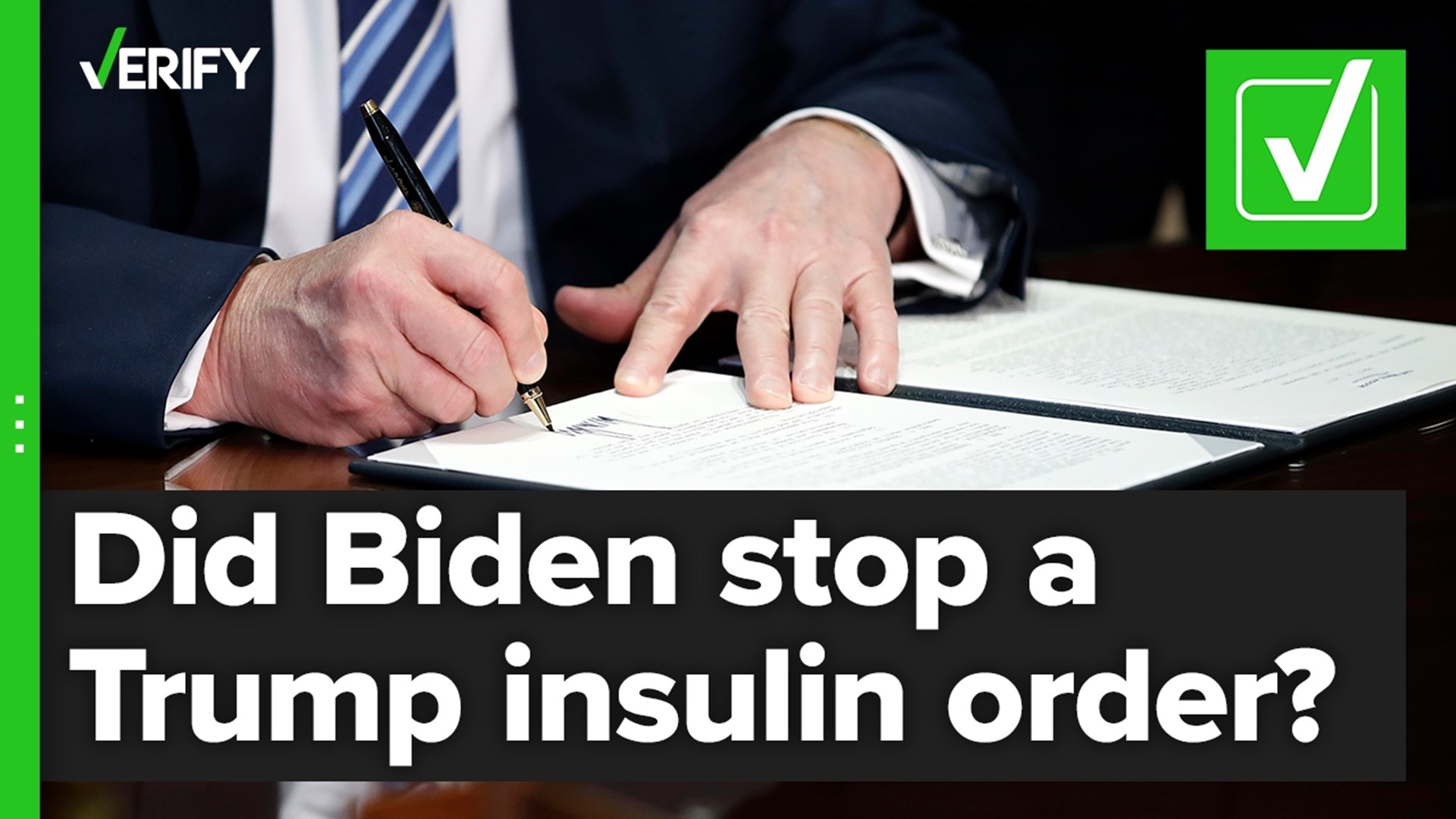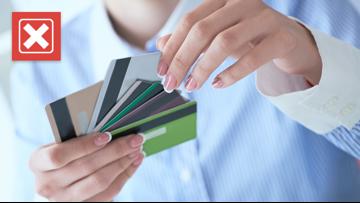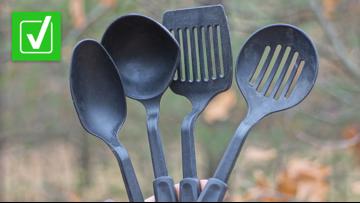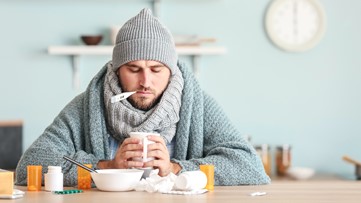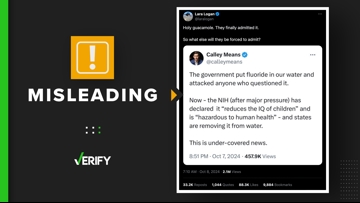Millions of Americans have diabetes and need insulin to survive, but it can cost more than some can afford. The American Diabetes Association estimates a quarter of people with diabetes have at some point had to ration their insulin, which is dangerous and can even be fatal.
In an effort to lower the cost of insulin, the U.S. House of Representatives passed a bill – not yet voted on by the Senate – which would cap insurance co-pays for insulin to $35 per month. However, as VERIFY previously reported, the bill would not help everyone who needs insulin, such as those without health insurance.
In response to that reporting, many VERIFY viewers told us they heard that President Donald Trump had signed an executive order to lower the price of insulin, but that President Joe Biden had stopped it after taking office.
THE QUESTION
Did President Biden stop an executive order issued by President Trump that intended to make insulin more affordable?
THE SOURCES
THE ANSWER
Yes, the Biden administration stopped an executive order issued by President Trump that intended to make insulin more affordable, but the order would have only helped low-income patients at select clinics.
WHAT WE FOUND
On July 24, 2020, President Trump signed Executive Order 13937. The stated goal was to make insulin and EpiPens more affordable.
There’s debate about what sort of impact it would have had, but there’s no way to know for sure because it never actually went into effect. Here’s why.
Executive orders don’t typically go into effect immediately. The federal departments involved first have to write up a plan to execute them, called a rule. Trump’s Department of Health and Human Services finalized an insulin rule on Dec. 23, 2020, and scheduled it to take effect Jan. 22, 2021.
But President Biden took office on Jan. 20. His administration issued a freeze on the rule – and several others that were still pending – so his administration could look it over before letting it take effect. This is common practice when a new president takes office.
After a months-long review process, the Biden administration decided to rescind the rule, preventing it from going into effect.
As for the claim that Trump’s order would have lowered insulin prices, that’s true, but only for low-income patients of Federally Qualified Health Centers.
FQHCs are community clinics that receive government funding to help vulnerable populations. They’re eligible for government-negotiated discounts on certain drugs, including insulin.
Trump’s order would have prevented FQHCs from charging patients within certain income brackets – those making less than 350% of the federal poverty line – more for insulin than the discounted price paid by the clinic, plus a small administrative fee.
But only about 1 in 11 Americans use FQHCs, according to the U.S. Bureau of Primary Care, the agency that oversees them. In turn, only a fraction of those patients use insulin, and only a portion of those fall below the income threshold to qualify for the proposed discount. So Trump’s order would not have made insulin cheaper for most Americans.
There was also pushback from the clinics who would have been implicated under this rule. The National Association of Community Health Centers called the order well-intentioned, but said it wasn’t the right solution because the red tape that would have been created by tracking which patients are eligible for the discount would be so expensive and time-consuming that it would make it harder for the clinics to do their jobs.
The Biden administration cited those concerns that the challenges to health centers would negate cost benefits to their patients as its reason for preventing the order from taking effect.
